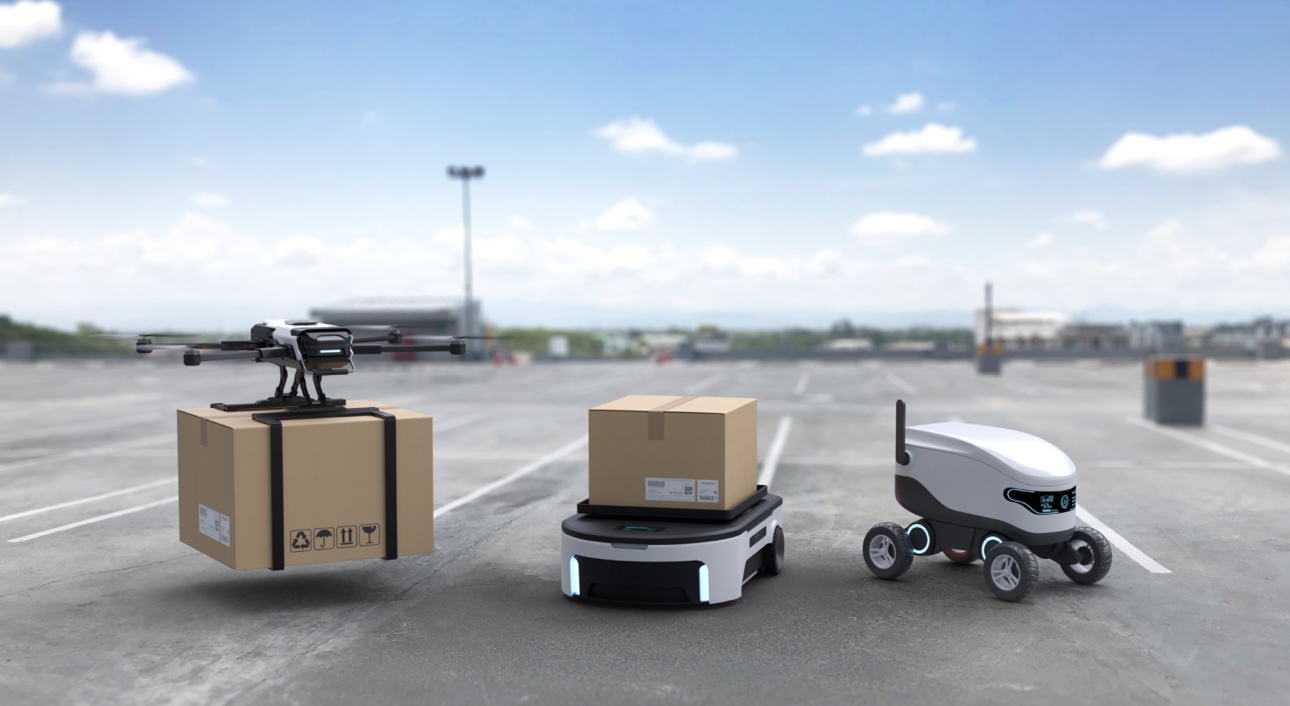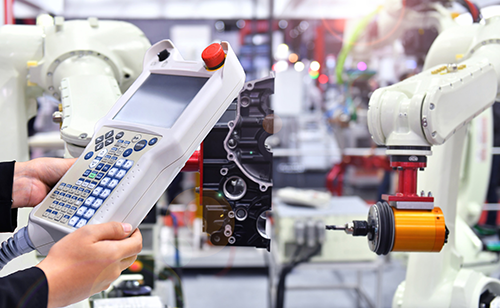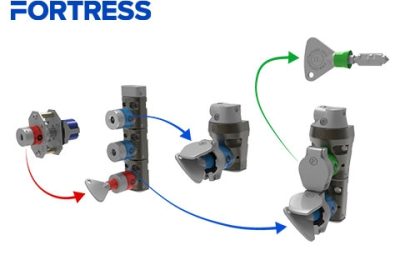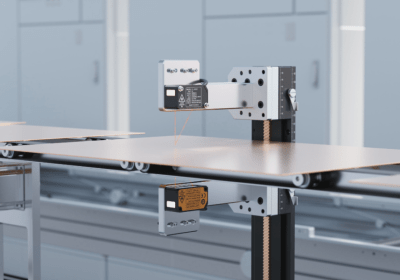Unlocking Real-Time Operations: The Game-Changing Power of 5G in Manufacturing

Unlocking Real-Time Operations:The Game-Changing Power of 5G in Manufacturing
Introduction
The industrial automation field experiences a significant development due to 5G technology which brings breakthroughs in connectivity features alongside speed and dependability. The worldwide industry transformation now uses 5G technology to serve as a driving force for innovation together with productivity boost and development expansion. This article evaluates the many dimensions of 5G's effect on industrial automation by analyzing essential characteristics along with practice-based implementations and advantages and obstacles and potential developments.
Understanding 5G in Industrial Automation
Cellular networks based on 5G technology produce substantial enhancements beyond previous generations that primarily affect connection speed and the degree of delay and device compatibility. Industrial automation depends heavily on real-time communication and data processing for its success therefore the new enhancements are absolutely critical.

Key Features of 5G
1. The new 5G technology enables devices to communicate instantly at response times which reach 1 millisecond and below. Industrial processes need real-time responsiveness thus requiring these applications such as robotic control and process automation.
2. 5G supports extremely fast data speed transfers of 20 Gbps which enables high-definition video content streaming as well as processing big datasets through complex simulations and extensive sensor data evaluation.
3. Through 5G technology industrial facilities will gain the ability to connect one million devices across each square kilometer for their dense IoT device networks.
4. The 5G technology provides an enhanced reliability feature that delivers constant dependable connections across challenging industrial environments through its ultra-reliable low-latency communication (URLLC) system.
Real-World Applications of 5G in Industrial Automation
Multiple economic sectors have already applied 5G technology for industrial automation because it has proven transformative.
1. Smart Factories
5G technology establishes uninterrupted information exchange between industrial equipment and human operators and industrial systems in smart factories. 5G technology enables time-sensitive data exchanges which enable automated production lines to operate with robots working under AI guidance for complex industrial procedures. IIoT sensors operating through predictive maintenance systems monitor equipment condition to send operators warning alerts about developing problems that might trigger equipment stoppages. The smart factory Bosch operates in Germany uses 5G technology for real-time analytics that helps boost production efficiency by 20% along with reducing manufacturing waste.

2. Autonomous Guided Vehicles (AGVs)
Manufacturing plants together with warehouses depend heavily on AGVs as material transport solutions. The vehicles need uninterrupted connection to their central control systems both for routing and obstacle avoidance operations. The combination of 5G technology enables AGVs to reach remarkable precision for movement through dynamic conditions thanks to its characteristics of low latency and high reliability. By 2025 Amazon decentralized its 5G-enabled AGV fleet to all fulfillment centers which enhanced package handling performance by 30%.
3. Remote Monitoring and Control
The 5G network enables distant observation and equipment operation of industrial machinery which proves essential for mining operations and energy facilities as well as agricultural applications. From remote distances that reach from hundreds up to thousands of kilometers, operators can execute equipment management by employing high-definition video feeds and sensor information to produce exact real-time choices. Mining company Rio Tinto leverages 5G technology to operate their autonomous haul trucks remotely at their Pilbara operation in Australia thus improving employee protection and cutting down operational spending.

4. Augmented Reality (AR) for Maintenance
Industrial maintenance training and industry maintenance have started using AR applications as a regular practice. Laborers who wear AR glasses can stream AR content because 5G delivers both quickness and wide relay speeds which enable real-time access to tutorial guides along with system visualization through remote experts. The jet engine production line of General Electric adopted AR maintenance procedures operated by 5G networks which reduced repair operations by 40%.
5. Energy Grid Automation
Certified Motion Control Professional Program
Strengthen Your Skills and Enhance Your Career
 Motion control is ubiquitous to automation. A3 offers the fundamental knowledge that benefits everyone working with motion control, motors and automation technologies. The program is designed to ensure professionals have the knowledge they need to advance their careers and benefit their businesses.
Motion control is ubiquitous to automation. A3 offers the fundamental knowledge that benefits everyone working with motion control, motors and automation technologies. The program is designed to ensure professionals have the knowledge they need to advance their careers and benefit their businesses.
Become a Certified Motion Control Professional (CMCP) and join the elite group of system integrators, machine builders, manufacturers, end-users and others recognized in the industry for their professional knowledge and expertise.
The energy sector leverages 5G for real-time monitoring and optimization of power grids. The precise connection between distributed energy resources (DERs) through 5G advancements ensures both precise definition and stability of power grids. State Grid Corporation of China used a 5G-based grid automation system that boosted energy distribution efficiency by 15%.
Benefits of 5G in Industrial Automation
The implementation of 5G technology in industrial automation processes brings multiple advantages which include:
1. Real-time data processing along with communications technologies increase operational speed which leads to decreased processing time and greater production output.
2. Scanning applications from remote areas allow workers to keep away from dangerous locations while near-time measurement results allow workers to take preventive safety steps.
3. Predictions from maintenance combined with operation performance improvements generate substantial savings through reduced downtime and minimized resource waste.
4. The 5G network architecture provides businesses with both flexible operation capabilities and scalable connectivity for numerous electronic devices in the industrial environment.

Challenges in Implementing 5G in Industrial Settings
1. The implementation of 5G in industrial automation processes requires handling multiple operational difficulties
2. Building 5G infrastructure demands substantial costs for new technological equipment installation.
3. The growing connectivity through 5G frays industrial security as cyberattacks become more likely and demand stable protective measures.
4. The implementation of 5G depends on proper spectrum band management because different regions have varying availability of specific spectrum frequencies which needs detailed regulatory oversight. The attendance of skilled professionals who can handle network engineering alongside data analytics and AI becomes essential to integrate 5G, because training and education programsrequire development.

Future Outlook
The evolution of 5G technology will enhance its industrial automation capabilities to establish smarter operation systems. The implementation of advanced applications through digital twins and AI-driven analytics along with robotics will result in enhanced workflow optimization capabilities while enabling advanced decision-making processes and predictive maintenance improvements. The new technological developments will automate operations throughout all sectors to generate higher productivity and lower expenses. The successful implementation of 5G for industrial automation depends on collaborative efforts between technology firms and industrial leaders and government policy makers who must work together to address expenses and security issues. National investments in 5G technologies will quicken the process of industrial digital transformation which will enable tightly integrated automated facilities. The adoption of 5G by industries allows firms to take advantage of improved scalability options as well as flexible features for expanding Internet of Things device networks. Technological growth brings 5G systems which create flawless connections between smart factories and supply chains and remote platforms thus building worldwide industrial connectivity networks. Because of 5G, the industrial automation sector undergoes transformation to reach enhanced speed alongside improved safety and operational efficiency at the same time it generates fresh opportunities for both development and economic development.
Conclusion
The industrial sector experiences automation transformation because 5G systems provide better networking capabilities and operational speed as well as instant data analytics. Through its fast connection capabilities and low-latency capabilities companies can perform smooth machine-to-machine interactions and preventive maintenance along with remote system checks which reduce equipment downtime and business expenses. Smart factories which implement 5G technologies achieve better automation levels and safer production environments with smooth workflow enhancement. Ericsson provides evidence demonstrating that 5G manufacturing helps businesses reduce costs while enhancing operational efficiency through their website. Exploration of 5G technology delivers competitive market position to adopting industries, even though they face economic costs for building infrastructure and cybersecurity threats. Upcoming industrial progress includes advanced artificial intelligence automation, digital twin, and augmented reality systems. With 5G technology industrial operations will experience a fundamental transformation that will establish smarter connected business environments with increased operational efficiency







Leave a Reply